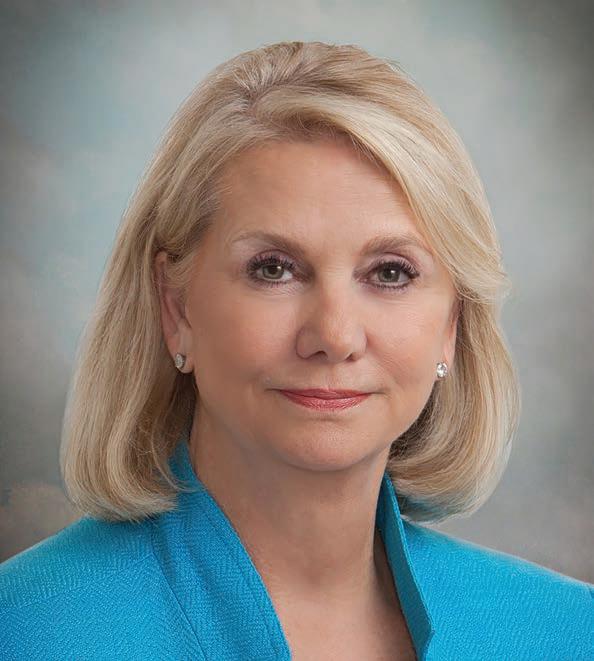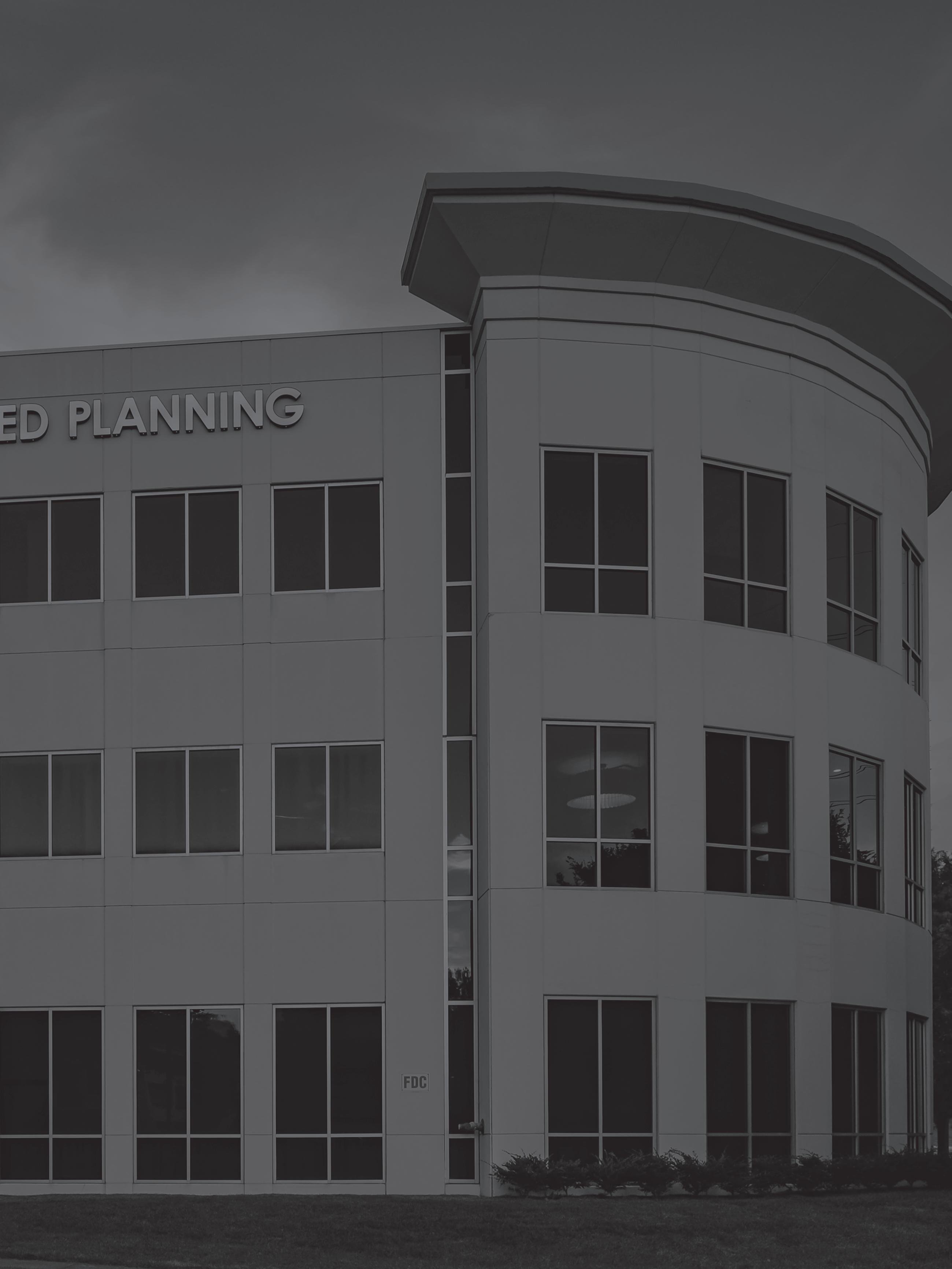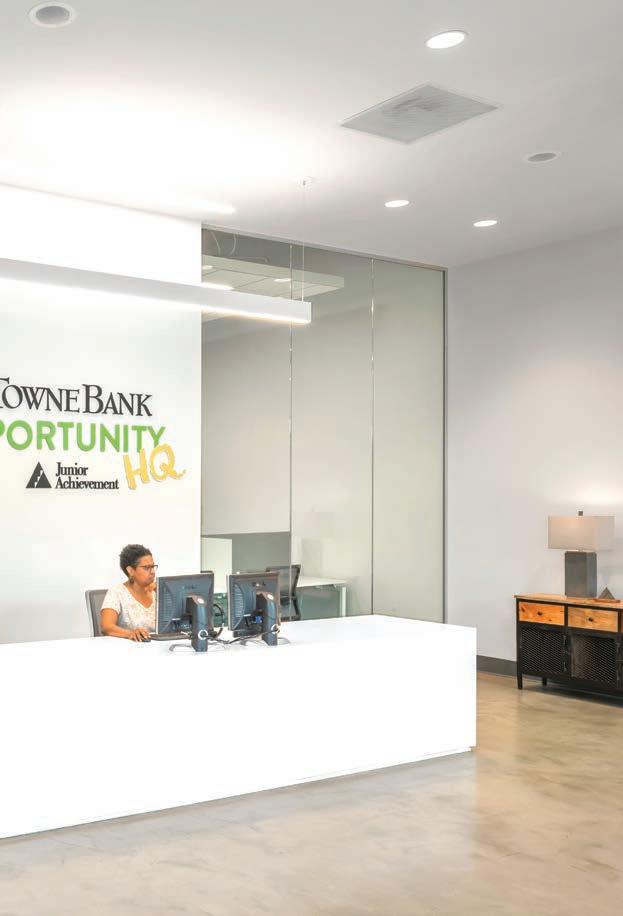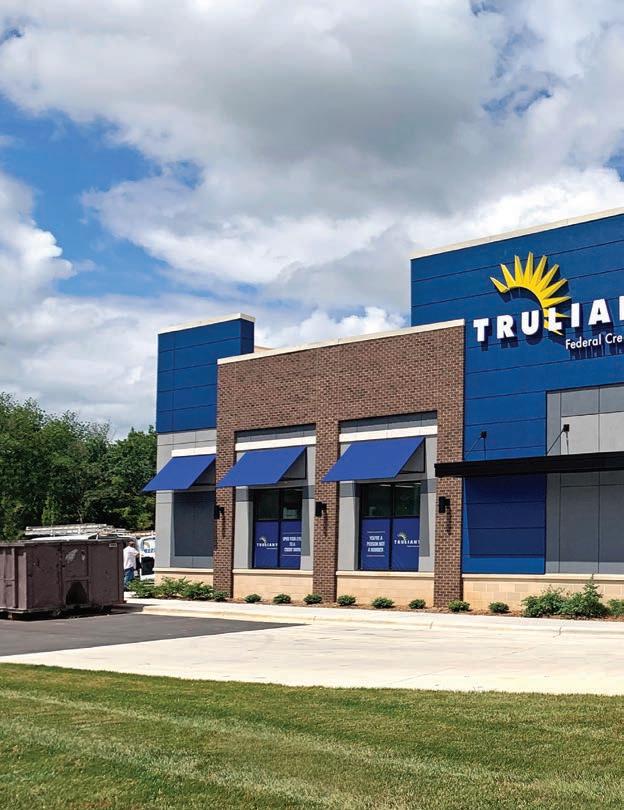
85 minute read
Construction & Infrastructure
Despite a slowdown in 2020 as the pandemic raged, a rise in material costs and a shortage of labor, the construction and infrastructure industries remain on a growth footing, with strong expectations for the near term and beyond.

Advertisement



Building confidence:
2020 saw a dip in construction and infrastructure activity but the forecast is for strong growth
Close to 850 new people move to the Charlotte metro area on a weekly basis, while companies continue to find the region an attractive relocation destination. It’s no surprise then that the region ranks among the country’s Top 20 construction growth markets, even with the pandemic.
PwC’s Emerging Trends in Real Estate 2021 report ranked Charlotte No.11 for expected growth in housing construction among the 80 largest U.S. markets. Charlotte Center City alone has continued its decade-long track record of growth and development with $3 billion in new development planned for this year, including 3.9 million square feet of office space, 552,000 square feet of retail space, 5,505 new apartment units and 2,020 new hotel rooms.
The industries driving talent needs in the Queen City in 4Q20 based on the Charlotte Regional Business Alliance Growth Report were manufacturing (51 percent), technology and business operations (33 percent), engineering (6 percent), distribution (6 percent) and call centers (4 percent). It is likely that these industries will continue to drive construction demand, along with the booming residential real estate sector, as they continue to expand in Charlotte going forward.
In a further sign of the times, by January 2021, North Carolina’s construction unemployment numbers showcased a significant rebound, breaking an 11-month job loss streak. While still below prepandemic levels, between December 2020 and January 2021, the industry gained 1,200 workers, going from 235,800 in February 2020 to 230,700 in January 2021.
Performance In March 2020, ENRSoutheast forecasted the Charlotte-Gastonia-Concord area would see a total $8.42 billion in construction starts in 2020, 1.3% above 2019’s $8.32 billion. Single-family and multifamily construction took up the lion’s share with $5.36 billion while institutional added to commercial and manufacturing construction cumulated $2.13 billion.
One sticking point, similar to other similarly sized cities, is cost. CBRE’s Southeast Construction Costs 2019-20 Report identified a whopping 73% increase in overall construction costs between 2004 and 2019, with labor, materials and regulation being the triad drivers of this long-standing and uninterrupted upward trend. Construction’s primary materials —( )
Strong year
Robust regional economy helps overcome pandemic challenges
Pat Rodgers
President & CEO – Rodgers
How did your business evolve in the COVID-19 landscape? We’re fortunate to work in a region with an active and robust economy. While 2020 brought us many challenges, we were grateful to close out the year as one of our strongest and highest volume years to date. While we were able to make progress on some exciting projects, it didn’t come easily, as we had to react and adapt to a new way of operating that came with a global pandemic. In addition to implementing new safety measures, we had several construction measures in place that allowed work to continue forward. One of those has been the use of prefabrication on our projects. This process has been a key focus for us over the last several years and will continue to evolve as the industry moves in that direction. Prefabrication is exciting and implementing prefab early in the planning phase of a project can result in increased efficiencies, higher quality, reduced overall schedule, and safety improvements. One of our largest projects in 2020 implemented prefabrication across several areas of the build, which helped ease operational impacts due to COVID-19.
What can be done to increase the representation of women in the construction and engineering fields? I’m happy to say that since I entered the industry, representation has increased. Although not a dramatic amount, it’s enough to start making a difference. It’s important that we are making strides to continue enabling and encouraging diversity, because at the end of the day it will help us all be more successful. I also believe the technology in our industry is becoming more exciting every day, and I think that is helping us attract younger generations to the industry.
What are your main goals and priorities for 2021? In 2019, we launched a safety program called Live Safe and we’re heavily focusing on that. Not only do we want our team members to live safely when they are on a project site, we want them safe when they’re home with their families as well. Our main goal every day is to make sure everybody goes home safely to their families. COVID-19 has stressed this goal even more.
We’re also trying to ensure that projects are kept in the pipeline. As we crossed into 2021, the level of new project activity has certainly increased, and we anticipate that will continue and possibly accelerate.
As a region, the Carolinas work well together and have good private-public partnerships. Rodgers has been fortunate to be part of several of these partnerships in Charlotte and Raleigh that have helped build and expand community culture.

Michael Byrd
Regional Vice President and Division Manager Brasfield & Gorrie – Charlotte

What were the biggest challenges of 2020?
The world of construction changed dramatically in March 2020, as did everything else. Projects under construction were hit with various challenges. The main challenge was understanding COVID-19 and navigating what that meant for our company and projects. Our safety team, together with two infectious disease experts, worked to develop and share best practices for promoting hygiene and following recommendations from the Centers for Disease Control and Prevention, including those for social distancing and face coverings, on our job sites and in our o ces. Examples of best practices being implemented across our job sites include limitations on the number of workers in hoists and elevators, heightened cleaning protocols, additional handwashing stations, and changes in break areas and food vendors, among other practices.
Despite all the challenges, we achieved our lowest recordable injury rate on record, and we are grateful to our field teams for their incredible dedication and hard work.
How has demand for work changed in the various sectors that you work in?
Healthcare is unique. Coming into 2020, there was a boom in healthcare. The pandemic has shifted healthcare priorities. As the industry responds to COVID-19, there are new services needed, so I think healthcare will continue to be strong.
Commercial construction o ce buildings have slowed slightly as people try to figure out what the new o ce environment will look like.
Industrial distribution, on the other hand, is on fire. There are more manufacturing facilities being built.
Multifamily is big here in Charlotte. Several clients wanted to build hotels, but with hospitality a ected by the pandemic, they’ve opted to build apartments instead. There are numerous three- and four-story apartment buildings in development, along with mid-rise and highrise buildings. That market remains in demand.

Despite social distancing and supply chain disruptions, construction leaders were able to navigate the COVID-related challenges.
( ) iron and steel, gypsum, concrete blocks and bricks — all witnessed a significant cost increase, with the possible exception of glass, which remained relatively stable in the 19-year interval analyzed. A JLL outlook report showed continued rising material costs between December 2019 and December 2020, with a whopping 36.1% increase in lumber and plywood costs, a 20% rise in copper and brass mill shapes and a 6% hike in plastic construction products.
On the labor side, and in Charlotte specifically, preCOVID, hourly construction worker wages remained in line with the Southeast average ($20.51/hour) and below the national average ($24.65/hour), standing at $20.28/hour.
The silver lining is the emergence and increasing adoption of construction innovations, such as prefabrication, cross laminating timber, GPS, 360-degree cameras and virtual reality, which are poised to increase productivity at the job site, hence

reducing costs and time frames across construction projects.
Challenges In a nod to the unprecedented experience of 2020, LBMC’s Business Outlook Report 2021 identified the COVID-19 pandemic (47.7%) as the leading concern of the U.S. construction industry. Those concerns linger as companies have had to focus on new worksite requirements like social distancing, remote working, longer lead times and delays in receiving materials and even outright delays in projects, all of which applied in the Charlotte MSA. As developments unfolded, it often became a matter of expecting the unexpected as uncertainty became the industry buzzword. “When the pandemic hit nobody really knew what to expect. We were coming off our best year ever in 2019. We had a great backlog coming into 2020 but no one has a pandemic written into their business plan. Our office projects were the first to be significantly impacted and almost immediately we had four or five very large office projects go on hold or be canceled altogether,” said Tripp Beacham, managing principal at BB&M, in an interview with Invest:.
Rounding out the Top 3 concerns in the LBMC report were materials, supplies and equipment costs (29.5%) and employee and benefits costs (29.5%). UNC Charlotte’s 2020 State of Housing in Charlotte Report also painted a costly picture of rising land costs, which are likely to create a drive for more densified assets, meaning the possible construction of taller buildings with an increasing number of floors to accommodate

Wes Jones
Managing Principal, Charlotte Regional Office – Progressive AE
I’m bullish about Charlotte. I’ve been here since 1995, founded a firm in 2003, and I have always been confident about the future of our city. When I think about Charlotte’s outlook it’s hard to not see it through the eyes of our business, and what I’m seeing is a huge need for multifamily housing units. That need speaks to people’s desire to live here, to move here, and to continue to be a part of an urban center.
My hope is that once the vaccine for COVID has been rolled out, we’ll be able to fully return to the vibrant Charlotte we know and love. While some things will likely change, the future of Charlotte is bright, and I wouldn’t want to live anywhere else.
Mark Dent
Vice President & General Manager Turner

What notable projects did Turner work on in Charlotte in 2020?
Turner’s Charlotte o ce is one of 46 o ces operating in North America. Our notable Charlotte projects completed in 2020 were the Charlotte Mecklenburg Police Department Independence Division Station, Charlotte Mecklenburg Schools’ Collinswood Language Academy, and the Piedmont Natural Gas Test Kitchen. Charlotte-area projects currently in progress are the Honeywell Headquarters Interior Buildout, Charlotte Mecklenburg Schools’ East Mecklenburg High School Renovation and Addition, Duke Energy’s Maiden Transmission Operations Center, and the Union County Sheri ’s O ce.

How have you had to re-strategize your supplychain management?
With Turner’s large footprint, we have layered connections with manufacturing companies across the country and internationally. This has allowed us to stay in front of any schedule delays or delivery issues and manage the situation accordingly. There were challenges but we were able to shift our strategy when necessary, and before any disruption to the supply chain became an issue. Born from the lessons learned of 2020 and even previous years, Turner has created SourceBlue, which is a combination of our established national procurement, global sourcing and logistics programs. SourceBlue has streamlined the e orts of our supply chain experts to manage all aspects of buying, expediting and tracking deliveries, facilitating warranty issues, and managing closeout.
Which sectors are driving demand?
The most active sectors in the Charlotte area right now are commercial development, healthcare, public sector projects, aviation and data centers. The developerdriven market is still very powerful, and a lot of that is due to the increasing number of companies moving to Charlotte or looking for new o ce space.
The labeling of construction as an essential industry was a key victory for the sector in 2020.
the demographic growth. For traditional houses, it will drive subdivisions with smaller parcels. The average lot price and price per acre for residential lots in the Charlotte MSA has increased from $42,146 and $189,914 respectively in 2005 to $68,969 and $328,517 in 2018. That is a 64% and 73% increase in the last 13 years, and the upward trend continues.
In addition to costs, Charlotte’s builders also faced material shortages in 2020. On the lumber front, for instance, prices have climbed 110 percent since mid-April 2020. The shortage is due to the perfect storm of COVID-mandated lumber mill shutdowns, rising demand from a strong housing market, the decimation of British Columbia’s forest at the teeth of mountain pine beetles and past massive wildfires, according to the Charlotte Ledger.
From a regulatory standpoint, local, state and federal amendments to construction rules sometimes lead to barriers for new construction in the Queen City. Depending on the complexity of the project, it can take anywhere between three to six months to obtain planning approval. As is known with any infrastructure or real estate project, time is the enemy in avoiding added, unforeseen costs. The good news is that there have been a series of initiatives to encourage and expedite
new construction, as was the case in 2019 when the Charlotte city council approved new zoning rules for transit-oriented development near Blue Line light rail stations. The new rules enabled increased density and extra height for developers looking to build there, including affordable housing. Other initiatives are in the works. One plan relates to scraping single-familyonly zoning, which represents 84% of Charlotte’s neighborhoods.
The seismic shift inherent to COVID-19 has sparked creativity and innovation when it comes to injecting added resilience and efficiency to the construction industry to contribute to the Queen City’s overall rebound. Case in point, Cousins Properties Inc. took advantage of the initial economic uncertainty surrounding the pandemic to inject capital into Charlotte’s South End, including the acquisition of the RailYard for $201 million and two land sites totalling 5.6 acres.
Technology and sustainability Gargantuan challenges such as those posed by the pandemic usually spark equally disruptive ingenuity to counter them. The construction industry across the United States rose to the challenge, drawing from its seemingly boundless innovation well. The industry became a trend-setter for new technologies, processes and practices that are likely to remain and thrive in the post-pandemic landscape.
Linchpin provided a glimpse of these new trends, compiling those that represent the most significant disruptions: modular construction, 3D printing, sustainability, exoskeletons, robotics, and costtrimming technologies.
Although the full extent of COVID-19’s impact on the energy sector is yet to be determined, the International Renewable Energy Agency (IRENA) registered decreased energy demand, energy price dips and a marked fall in oil prices. What is more, the agency reports that the renewable energy portion of power generation has grown in the global energy mix, despite the oil price slump.
One year into the pandemic, resilience echoes sustainability, and the construction industry is no exception to the rule. Construction players will have a pivotal role to play, not only in the use of sustainable materials, but also producing innovative designs that enable improved air circulation, bolstered insulation for temperature control and harnessing natural light, integrating energy efficiency devices and, when possible, integrating solar PV panels to enable renewable energy consumption.
Capitalizing on the sustainability momentum

within the industry, the North Carolina Clean Energy Business Alliance and South Carolina Solar Business Alliance have merged to create the Carolinas Clean Energy Business Association in an effort toward streamlined advocacy and bringing North Carolina up to speed with South Carolina’s aggressive regulatory changes that enable competitive solar bidding, utility construction plans and power market reforms. On Feb. 24, 2021, Duke Energy Renewables, a subsidiary of Duke Energy Carolinas, reached a new milestone by breaking ground on a 50MW solar park, the Broad River Solar project, in Cleveland County. It will be the first renewable energy generation asset to sell power to its own parent company, Duke Energy Carolinas.
The icing on the renewable cake that is a testament to the Queen City’s commitment to its energy transition is the signing by Duke Energy of power-purchase agreements with 11 solar park developments, close to 600MW of new installed capacity and close to $1 billion in solar construction toward 2026.
Opportunity Zones Mecklenburg County counts 17 Opportunity Zones (OZ), more than any other county in North Carolina, creating several different parcels of land in dire need of investment. They offer an opportunity for commercial real estate development as well as housing to accommodate the area’s booming demographics. The interest is apparent: in February 2021, Grubb Properties launched several OZ funds and raised $200 million despite the pandemic for its 10.5 acres aimed at developing a 400-unit multifamily project.
Local communities, however, are raising concerns

3D printing, sustainability, exoskeletons and robotics are among the major cost-trimming technologies driving construction innovation.


over the impact from new developments on renters. The Queen City’s OZ are located in some of the city’s most affordable places to live and own a business, while Charlotte’s growth spurt is also fueling fears over the possibility of gentrification and displaced residents. Developers, community leaders and local officials are working together to ensure all stakeholders are satisfied with the outcomes of the projects sprouting across the county’s OZ landscape.
Financing trends As is to be expected in the uncertain environment of the COVID-19 pandemic, financial lenders have demonstrated strong risk aversion and a wait-and-see attitude. Moreover, overleveraged stakeholders also paused their projects as the risk inherent to keeping them going outweighed the benefits. Project sponsors witnessed tighter underwriting, a higher cost of capital and more limited options to finance their construction projects. In contrast to the 2008-9 downturn, however, the financial regulatory framework is now much stricter, so much so that the Fed relied on severely reduced rates and flexibilizations in Federal regulations to encourage businesses to spend their guarded capital.
With some construction projects halted, banks have witnessed an increase in defaults on construction loans. Nationally, construction loan delinquencies increased 23.8% in 1Q20 compared to 1Q19, as reported in a Standard & Poor’s Global Market Intelligence Report. To remedy this, the $2.2 trillion CARES Act allowed for an easy modification of construction loans. Its provisions establish that an owner can qualify for a forbearance arrangement, an interest rate modification or a revised repayment plan. The CARES Act also establishes that any loan modification does not constitute a reportable Troubled Debt Restructuring (TDR) or a default, avoiding a negative impact on the borrower’s credit rating.
Residential trends Pre-COVID, the Charlotte metro area’s residential construction pace was such that it ranked 10th in permits for multifamily development, ranking Mecklenburg County third across the United States in that category. In September 2019, there were 12,000 apartment units under construction in the Queen City alone, with an added 8,000 in the pipeline.
Looking toward 2021, Realtor.com ranked Charlotte third among the country’s housing markets due to the projected growth in both home sales and prices. It is expected to be the strongest among the 100 largest U.S. metros. The report considers there will be three key drivers that will keep injecting steam into the sector’s performance: millennial homebuyers, affordability and a strong local economy.
Significant rezoning efforts have also been made to accommodate the construction of new residential assets for the Queen City. Developer HHHunt obtained approval for a rezoning petition in late 2019 to develop up to 308 apartments — 5% of which will be allotted to workforce housing — on a 26.7 acre parcel. In tandem, a 280-apartment project was approved. Plans for a new complex mixing 92 duplexes, triplexes and singlefamily homes for sale were also approved.
Most significantly, a populated list of developers including Wood Partners, Grubb Properties and Thompson Thrift were in the process of obtaining rezoning approvals to greenlight vertical ( )
®oundtable: Architecture
Leading firms discuss the highlights and milestones of the past year
Tripp Beacham
Managing Principal BB&M
How did 2020 play out for BB&M? When the pandemic hit nobody really knew what to expect. We were coming o our best year ever in 2019. We had a great backlog coming into 2020 but no one has a pandemic written into their business plan. Our o ce projects were the first to be significantly impacted and almost immediately we had four or five very large o ce projects go on hold or canceled altogether. We were opening a few multifamily projects at the same time, and there were big concerns there as well since new leasing activity ground to a crawl. Even as leasing was slowing on newly completed projects, we were surprised that our new multifamily work not only was stable, it was accelerating. Our senior living work also began to get some traction and our adaptive reuse projects and interior design thankfully remained stable as well. Strangely, the net result of the new work meant we continued to hire pretty aggressively throughout the pandemic.
What is your approach when tackling the multifamily sector? We’ve been doing multifamily projects for a long time Demand continues to be strong, particularly in our sweet spot, which is urban infill projects. They are complicated projects architecturally and from a construction standpoint. They are among the most di cult to design because of the mix of construction types. There are surprisingly few firms in North Carolina that excel at these very complicated infill projects that have structured parking, mixed construction and mixed use. Our experience in these types of projects has served us well as Charlotte has grown and the sites get more complex.
John Gaulden
Co-Managing Director & Principal Gensler – Charlotte
What was a highlight for the firm in 2020? Our firm is a research-oriented organization that is constantly studying the workplace and finding ways to help our clients. That research came to the very forefront early in the pandemic, midway through and certainly now as firms are trying to navigate what to do with their space and return to the o ce safely.
We’ve been asked a lot of questions over the last eight months: How do I protect my business and how do I protect my people and how do I do those two things in a safe way? How do I grow my business? One of the things we’ve really encouraged clients to do is to learn about the pandemic. Don’t think you’re just going to come back and things are going to be exactly as it was before. Instead, use this time to understand your business better, to look at patterns to understand how people are currently working and calibrating. Look at the things that you might be surprised at in a positive way so that you can then build upon that and have a stronger culture when you come back.
What is your outlook for 2021? For us in 2021, we’re always going to be about the safety of our employees and continued service to our clients. We’ve proven that we’re really e ective working together virtually and delivering great designs to our clients. Where we’re going next, I can’t tell you fully, but I can tell you that we’re very excited about the possibilities in 2021. We have a lot of people coming to us asking questions about what the future looks like. We kind of now feel we have a handle on the end game regarding this pandemic.
Zena Howard
Principal & Managing Director, North Carolina Perkins&Will
What were the key highlights for Perkins&Will’s Charlotte o ce in the past year? In 2020, we relocated our Charlotte studio within Uptown. Our Charlotte project pipeline is quite notable, including the new Truist Bank HQ and the Charlotte Douglas International Airport. We are also working with American Express on some of their lounges inside CDIA.
What is your take on the future of workplace 2.0? The big change lies in the notion of maximum density floor planning, where you max out the density to what the code requires. Some o ce spaces were putting people 32 to 36 inches apart. Unequivocally, that maximum density floor planning is on its way out. There is a strong emphasis on healthy workspaces, more so than ever, leaning toward connection to colleagues, nurturing the company culture and embodying its brand.
What near-term opportunities do you expect to arise? We are looking at creating a hub-and-spoke model between Uptown and the surrounding areas, such as South End, North Davidson, and the suburbs. At the moment, there is active discourse about cities, in terms of development. Large urban centers, such as New York, may not have the same draw post-COVID. Some people will continue working remotely because of lengthy commutes that require multiple modes of transportation. There are also ongoing conversations around buildings, creating development towers that include commercial, retail, living greenspace, all within one structure. It embodies a more resilient approach against disruptors such as the pandemic.
Tim O’Brien
Studio Manager LaBella Associates
What have been your milestones over the past year? I would say that a significant one was when we broke the $150 million mark for revenue. For a company that started about 10 years ago tucked away in Rochester, New York, to have a full national presence and crest that $150 million mark was a wonderful thing. As far as the pandemic goes, we managed the situation by being very flexible. We had the benefit of already having a good IT infrastructure in place and we were able to work securely coming out of the gate. We have about 1,200 sta now who had to pivot very quickly to working virtually. I have to applaud the discipline of our sta because we had an incredible year and we were able to keep the business running as well as could be hoped.
What is your outlook for engineering and construction in Charlotte over the next 12 to 18 months? We are very bullish. We think there is a fair amount of pent-up demand. A lot of things did not get launched last year among all the uncertainty and we’re finding that some of those projects are getting the green light now, in addition to what would have been the 2021 workload. Couple that with some exodus from the Northeast to the Southeast and it’s looking good. It continues to feel like a prosperous community. ‘Charlotte has made a seismic shift from being a banking community to now having its own culture and vibe. It’s a great place to be. The business community has certainly become increasingly diverse. We’ve seen a rise in the tech workforce — the creativity is bursting at the seams. For LaBella Associates, we’re looking forward to significantly growing our presence in the Southeast.
Data-driven
The use of data science in construction is rare but it can make companies nimbler in challenging times

How did DPR Construction adapt ? Like many organizations that were faced with immense change this past year, we’ve realized how people have embraced the need to adapt and evolve. The fact that the pandemic aligned with our 10-year strategic planning process was significant happenstance. A key component to our plan is the amplification of data to drive continuous improvement. A construction company employing data scientists is a real shift for us and we are a nimbler business as a result. We are using data for everything from accounts receivables to identifying stressors within our customers ecosystems that impact our business. This type of intelligence is not just about protecting our business; it’s about engaging and navigating these challenging times with our customers.
DPR is on our way to becoming a $7 billion company with 7,000 employees. It is critical to equip ourselves with the capability to manage our supply chain at that size and scale so that we have influence in our local markets. We’re fortunate that we were in the right place, at the right time, with the right strategy in place to turn the volume up leading into 2020. Part of it was having a vision and a great team to execute on it and also being able to mobilize projects quickly so we could adapt and evolve in sync with what was happening in the world.
How will COVID-19 impact the already tight labor market? The outlook in the labor market continues to be tied to workforce diversity and development. We have partnered with Goodwill, She Built This City, The ROC, Potions & Pixels and other non-profits to match their apprentice programs with opportunities with careers in construction. This is an intentional effort to grow our workforce. We are also working strategically to expand our community impact with customers like Atrium Health. We just leased a large warehouse between the main campus of the Atrium Health Carolinas Medical Center and the Charlotte-Mecklenburg Airport for localized pre-fabrication purposes. And, particularly rewarding is how we are reaching younger females and teaching them about construction while they are in grade school. In addition to She Built This City, DPR is actively working with local non-profits including Girls Rock Charlotte and the ACE Mentor Program. The past two years, we’ve recruited female interns through The ROC, a program that provides youth with construction trade training, opportunities for construction jobs after high school, and college credits.
Zach Pannier
Business Unit Leader – DPR Construction

Trade development programs designed in conjunction with community colleges will help meet demand for a skilled workforce.
( ) developments. Collectively, the list of household names is committed to delivering hundreds of apartments, adding to the 40,000 apartments that have come online in the region since 2015.
“We’ve been doing multifamily projects for a long time now, but it has been really intensive for the last seven to eight years,” said BB&M’s Beacham. “I think every single year we hear our friends who are generally not in multifamily development asking, when is this run going to end? How can we build so many apartments and have the rents keep going up? Land prices continue to escalate and material and labor prices are out of control. It’s the story of Charlotte really, and some of these cities like Nashville, Austin, Raleigh and similar places where people want to live and where businesses want to move. So, the demand continues to be strong, particularly in our sweet spot, which is urban infill projects.”
The stifling economic impact of the pandemic has made the Queen City’s urgent need for affordable housing stock even more critical. The urgency comes in a complex context of rising land costs, limited financial options, expensive materials and a talent shortage.
Perspectives: Challenges
Chris Frye
Co-Founder & Partner – Barringer Construction The most challenging supply disruptions during the pandemic have been the lack of manpower, followed by the shortage of material availability. We put a strong focus on following the CDC’s quarantine recommendations which often resulted in trade partners not being able to come to project jobsites. We had to be extremely nimble at the project level. If a project needed to be shut down and cleaned, we were honest with the client and we did what needed to be done. Avoiding the potential for outbreaks had to become priority number one.
Andrew Moriarty
Managing Principal, Carolinas – Bohler The investment that online retailers are making in some large facilities is pretty stunning as they are looking to consolidate their distribution operations at a heightened pace. The other industrial market component that is striking is pharmaceutical manufacturing, more so for us in the Triangle area. Getting the supply chains and having more products being made in the United States is being triggered by the episode that began back in March 2020. We anticipate the return of manufacturing within that industry to take on a more permanent shift.
Mike Shea
Regional Vice President – Empire Homes and Communities Prices are going up, municipalities are requiring more sidewalk and curb and gutter, and erosion control is increasing tremendously. We provide tra c impact analyses with road improvements but sometimes the municipality will request additional road improvements. As it adds up, solving the puzzle becomes more di cult, yet everybody wants builders to o er a ordable housing. We would love to do it but achieving all of this without taking any grants or anything from the city is challenging.
Gray Shell
Division President - Carolinas – TRI Pointe Homes As we stand today, we’re looking at things like lumber supply issues, appliances and fixtures that we are having to deal with given the supply chain disruptions but, sitting here now, knowing where we started the year, it’s pretty phenomenal to see how the industry has performed. Lumber prices have literally doubled from where they were in the spring. In terms of availability and pricing, we have started to see some relief but the material cost will continue to be an issue.
Construction leaders are closely monitoring supply chain issues and rising construction costs as part of the industry’s recovery process.
The silver lining is that the construction industry has not skipped a beat on the innovation and outside-thebox thinking that characterizes it. Creativity within the industry has produced modular construction, which has proven a viable option in the single-family and multifamily construction spaces. The idea is to capitalize on the benefits of factory-built, prefabricated building portions which, once assembled, are taken to the construction site and connected to the asset’s foundations. The methodology provides significant cost-savings as well as a shortened time frame between construction and inauguration.
Outside-the-box thinking could also include microcommunities, says Nicholas Donahue, CEO and cofounder of Atmos. “That’s going to become a trend in the near future. Recently, one of the co-founders of Casper and nine friends wanted to buy a huge plot of land in upstate New York and subdivide that to make it into a little community for them and their friends. And we’re currently working with three families that bought a plot of land that they’re subdividing between each family with a communal building they’ll all share. We think a lot more families and groups of friends are going to build these small, micro-villages,” Donahue said.

Commercial trends In its 3Q20 Industrial Charlotte report, Colliers evidenced a delivery slow down in the Queen City’s industrial space. It attributed the delay to the combination of market uncertainty and higher lumber and steel prices, causing developers to wait for commodity prices to come down to mitigate the unforeseen jolt in construction costs. Notwithstanding, Charlotte saw 4.29 million square feet of new warehouse construction and 145,500 square feet of flex assets, while it can expect an additional 3.85 million square feet under construction and 141,642 square feet of flex space.
COVID-19’s e-commerce surge has heightened the attractiveness of industrial assets, particularly in and around the Charlotte Douglas International Airport. One example is Queen City commercial real estate firm Collett, which is taking on its very first industrial spec asset development project, Airport85 Business Center. The center is a 154,920-square-foot spec industrial

building, slated for 1Q22. Its design will include 32-foot clear heights and up to 32 dock doors.
Charlotte’s definitive insertion into the e-commerce game was made even more apparent when e-commerce royalty Amazon set its sights on yet another industrial location, Carolina Logistics Park. It is the latest move for the e-commerce giant in the consolidation of its Queen City footprint, which includes its 566,800-square-foot WestPark building, a 855,000-square-foot robotics fulfilment center and warehouse facilities in both Concord and Kannapolis. Another honorable mention includes Rock Hill Commerce Center. The two towering structures are part of a four-building project totalling 1 million square feet. The project is scheduled to come online in 4Q21.
Infrastructure North Carolina’s energy mix includes nuclear energy (34.25%); natural gas (33.65%); coal (16.78%); solar (7.21%); hydro (5.32%); biomass (1.96%); wind (0.44%); other fossil (0.39%) and oil (0.10%). According to the US Energy Information Administration, in 2019, North Carolina ranked second only to California Keith Poettker

President Poettker Construction
What opportunities and innovations have emerged for the industry?
Like every industry, Poettker had the communication tools, like Microsoft Teams and Zoom, in place, primarily using the basic features pre-pandemic. When the pandemic abruptly hit, our team was forced to pivot and quickly utilize these tools to their full capability. These real-time collaboration tools have helped our team stay connected with each other and our clients and business partners.On the safety side, from a security perspective, I feel firms realized how many individuals were arriving at their workplaces and jobsites unannounced. With site security, badging and access-control protocols already in place, we utilized this opportunity to enhance these initiatives.
In which segments are you seeing the most demand during this time?
The distribution space, in terms of warehouses and business-to-consumer delivery centers, is showing significant demand, with online shopping and the logistics demands of transportation. Pharmaceutical is another area in high demand, pending the outcome at the federal level. If the federal government proceeds with a much-needed national infrastructure bill, any markets or trades impacted by that bill will obviously see high growth.
I envision continued growth for multifamily developments. Over the past year, as people have learned to work remotely, they have realized they don’t have to stay in a geographic location they don’t like just for work. The Charlotte regional area has many great communities and should expect a wave of population growth as a result of the remote work environment.
The o ce space and mixed-use developments are going to take a couple of years to improve as clients figure out and understand the new normal: whether companies can live with remote work, how long the transition will be to bring employees back to the o ce, and what post-pandemic o ce space will look like.
in both the amount of total installed solar power generating capacity at almost 4,700MW and actual solar generation.
On the nuclear energy front, North Carolina ranked sixth nationally in electricity net generation from nuclear power in 2019, producing about 5% of the nation’s total. That same year, nuclear power claimed the top spot as the largest source of North Carolina’s electricity generation, surpassing natural gas to provide close to 32% of total in-state electricity.
In light of the pandemic’s effects on crude oil output and prices, combined with the Texas power outage crisis in February 2021, the COVID-19 resilience being built up in the Queen City’s economy should be reflected in its infrastructure as well. In February 2020, Charlotte made known its plan to power municipal buildings with zero-carbon energy by 2030. It is worth mentioning that North Carolina is among the 10 states with the lowest per capita petroleum use in the United States, although so too is its total annual expenditures for motor gasoline.

Ecosystem Charlotte’s public water and wastewater utility, Charlotte Water, enjoyed an approved operating budget of $461 million as of July 2020, of which $75 million was allocated to the Water Community Investment Plan and $235 million to the city’s Wastewater Community Investment Plan. In terms of wastewater, the Queen City’s infrastructure includes six wastewater treatment plants for a total plant capacity of 123.175 MGD.
Regarding energy efficiency, North Carolina as a whole has greatly benefited from the powerful
North Carolina was the sixth-leading state in electricity net generation from nuclear power in 2019.

Ed Rose
President & CEO – Shelco LLC
Most of our clients hit the pause button or the reset button, by which I mean to say, most of the projects on the drawing board pre-pandemic are still on the drawing board and clients have been reevaluating their scope. The challenges of the pandemic have a ected aspects of building design — things like elevator transportation or going from a midrise building to a low-rise one. Tenants are trying to decide how they are going to come out of this pandemic, gauging the reaction of their employees to these new notions of what a working space should look like. As developers, we need to wait for the tenants to reach such conclusions.

synergy between enabling local regulations and Duke Energy’s efforts. The Southern Alliance for Clean Energy found the state had achieved overall savings of 0.77% from its 2018 retail sales. By doing so, North Carolina is spearheading efforts on a national scale by positioning itself above the 0.71% national average.
North Carolina’s energy transition effort is missing a key player, however: wind energy. The state lacks installed wind power capacity. Yet, Environment North Carolina highlights the state’s coast has a tremendous offshore wind power capacity. The advocacy group’s research found that North Carolina’s coastal wind resource’s potential is higher than any other Atlantic Coast state. It estimates that with a fraction of the available resource, the state could meet up to 20% of its energy needs. What is more, according to the Department of Energy, the state has the potential to gain anywhere between 10,000 to 20,000 new offshore wind manufacturing jobs, a welcomed figure in a time of recovery and an expected rebound.
Looking ahead The Charlotte MSA is rising to the challenge of added layers of complexity, which its construction industry is adamant on cutting through on the road toward extending its growth boom. On the one hand, Charlotte is dealing with increased materials costs, rising construction and land prices and a prevalent talent shortage. On the other, the demographic inflow, new technologies driving cost-efficiency and productivity as well as a diversified landscape of thriving industries is paving the way for a continuously prosperous construction sector going forward.

David Harker
CEO & Founder Harker

How have you tackled the development of closedspace projects in this new environment?
For a firm that specializes in corporate interiors, the pandemic has been a blessing from a work perspective and actually getting it done. We have seen an uptick in capital improvement projects from institutional landlords, where they are looking more at developing spec suites, which are more cost-competitive. The majority of the buildings that we work in are occupied by companies that have sent the lion’s share of their people home, so we are not bound to do the work at night as the buildings remain empty. We were also able to take in PPP resources when they were first made available, which endeared us to our team and provided a great opportunity to get up on the mic in front our company to let everyone know from a piece of mind perspective that we had an additional $1 million in the bank, spreading a sense of relief as we continued to have a successful 2020. We quickly realized that we did not need the PPP loan and refunded it a couple of weeks after we got it.
How have you adapted to supply chain challenges?
One of the challenges we face is that our projects are highly fast-paced. The biggest leed-time or supply chain issue we have seen is in appliances. It is taking exponentially longer to source appliance packages on projects. Besides that, we really have not seen much of an impact. Light fixtures were an issue because for every one light there are a thousand others you can source. It has added another level of e ort on our part.
One of the things we have noticed is that the expectation for delivery on projects has almost increased post- or during COVID than pre-COVID. The communication uptick has been intense and the amount of time we are given to respond seems to have shortened. The attention to detail and expectation for delivery has added pressure because in our capacity as contractors we are dealing with COVID-19 too.

Constant communication with clients and project updates are among the keys to success for construction firms.
Skyrocketing costs:
NAHB pleads for action
In addition to a shortage of labor, the biggest challenge facing the construction industry is the cost of materials. With prices already on the rise prepandemic, COVID-19 only exacerbated the problem, given heightened supply and demand constraints. These higher costs not only impact builders but homebuyers and other investors, who end up seeing the bulging expenses in the purchase price of their properties. The spike in lumber prices alone has led to an increase of more than $24,000 on the purchase of an average, new single-family home, according to the National Association of Home Builders (NAHB). The association adds that multifamily properties are seeing an additional $9,000 on the purchase price since April 2020. The NAHB also points out that the higher costs threaten housing affordability. In mid-March 2021, the NAHB sent a letter to U.S. Department of Commerce Secretary Gina Raimondo seeking action on the issue of rising lumber prices.

5-year price trend of Lumber on the Nasdaq commodities market (April 26, 2021): The NAHB letter, with 36 related signatories, highlights that since April 2020:
1200
• Lumber prices have more than tripled
• Oriented strand board (OSB) prices are up more than 250%
• Additional cost to build an average new singlefamily home: +$24,000
• Additional cost to build a multifamily unit: +$9,000
• Lumber, and engineered wood products like
OSB are large components of residential and commercial remodeling projects, such as hospitals, schools, o ces and restaurants
• The Random Lengths Framing Composite Price surpassed $1,000 mark on Feb. 23. The prepandemic record high was $582
• Building 1,000 average single-family homes creates 2,900 full-time jobs and generates $110.91 million in taxes and revenue for local, state and federal government.
1000
800
600
400
200
2016 2017 2018 2019 2020 2021
Source: Nasdaq

Banking & Finance:

The Charlotte region is an established banking and finance hub, second only to New York City. Dominant commercial heavyweights, entrenched community lenders and a burgeoning fintech environment ensure a resilient industry that is primed for further growth.




Critical role:
From PPP loans to digitalization, the banking and finance industry has been front and center during the pandemic
The banking and finance sector in the Charlotte MSA excelled during the pandemic storm in 2020 and early 2021, underpinning its status as a key player in an economy that continues to gravitate toward diversification. Providing key support to local businesses through its handling of the Payment Protection Program (PPP) loans, while embracing the technological trends accelerated by COVID-19, the banking and finance sector rose to the occasion in the past year, and proved it was ready for the future.
Looking at the lay of the land, Charlotte is the second-largest banking center in the United States by assets, behind only New York City. Not only is the region home to the second-largest bank in the country — Bank of America (BofA) — but NewDominion Bank, Carolina Premier Bank and Truist, the $66 billion merger of equals between BB&T and SunTrust to create the nation’s sixth-largest bank, also call Charlotte home.
For the last 20 years, the Charlotte-ConcordGastonia region also has consistently outpaced the national average percentage growth in financial sector employment. Pre-pandemic, the U.S. Bureau of Labor Statistics reported the region’s financial employment had increased 47.4% since 2000, compared to 11.7% nationally. In the Charlotte region alone, 82,000 people work in the finance and insurance industry.
The region’s banking ecosystem, encompassing access to fintech, data science and education programs, is often cited as the common denominator that allowed Charlotte to claim its status as a banking magnet. As the Charlotte Regional Business Alliance stresses, with 2.5 million people in the Charlotte metropolitan area and 25 colleges and universities, the region has the ability to leverage human and intellectual capital to ensure long-term growth.
Sector performance The Charlotte region has emerged buoyant from the winning trifecta of thoughtful planning, resilient industries and sheer momentum. After the 2008-09 crisis, city leaders laid the groundwork for growth with strategic investments in infrastructure, transportation and core businesses. There was a significant pool of available talent after the financial crisis that bolstered the area’s attractiveness. Charlotte is now home to innovative and growth-oriented companies across a diversified array of high-added-value sectors, ( )
On track
Merger progress continues unabated with core bank conversion expected to be completed in the first half of 2022
Heath Campbell
President, Charlotte Metrolina Region – Truist
How did the integration process from the merger progress in 2020, given the pandemic? When we speak about the pandemic, I think the first thing we need to keep in mind is the widespread impact it has had on individuals, institutions and businesses in our community. Our hearts and prayers go out to all those and their families who have lost someone, as well as those whose livelihoods have been challenged.
In terms of Truist, we’re on track to complete our core bank conversion in the first half of 2022. At that time, clients will see all of our branches, signs, products and services change over to Truist, and we’re committed to creating a smooth transition for them. We had our first client-facing conversion in August with Truist Securities and it went very well – even in a virtual environment. Our clients were very happy with how the process went, and that’s a good sign of things to come.
There are 29,000 small businesses in CharlotteMecklenburg, representing 40% of the jobs in the community. Many of these businesses are continuing to cope with a very challenging environment. We’re extremely proud of our role as one of the most active PPP lenders in the country to support our clients during this unprecedented time. In addition to other types of relief, we mobilized thousands of teammates to process PPP applications and provide urgent capital to our clients when they needed us most.
How are you balancing an online presence with the branch network? To me, the local presence of an organization is just as critical for the future as it is today. Our branches will always be an important bridge for us to build relationships, meet our clients’ needs, and contribute to our communities. But like many industries, we’re seeing our client preferences and behaviors change as more and more clients choose to bank with us digitally. This trend has accelerated even more due to COVID-19.
How does the recent sale of the investment advisory services reflect the moves the bank is making? The institutional 401(k) industry has experienced significant consolidation, and the purchasers are wellpositioned to provide scale and expertise for our plan sponsor clients and their plan participants. While we divested those services, we are also continuing to focus on growth opportunities and making strategic investments in key areas. For instance, we’ve recently made several insurance acquisitions which complement our strengths in that area. We will continue deploying our capital in areas that give us competitive advantages and allow us to provide clients with the services they want and need.

Weston Andress
Regional President for Western Carolinas PNC

What have been your major takeaways from the federal relief packages?
We think it was critically important to get stimulus money distributed, particularly to small businesses. Large corporations with large balance sheets could access the capital markets, which remained open, as well as large, syndicated lines of credit. When you get down to the smaller players, whatever sector they are in, that is where the real hurt has been. The CARES Act, and the Paycheck Protection Program specifically, came at the right time for small businesses. There is still significant hurt out there in the local economy, and there are several businesses on the edge.
How is PNC rethinking its future and that of Charlotte’s banking sector?
We have learned that technology is going to be a driver for the future. Banking companies have truly become technology companies in many ways. That is going to be a critical component going forward. Financial institutions are going to have to invest in quality technology to compete in this environment. The other part of the future is talent. There is a war for talent in the banking sector that is going to continue. The industry needs highly capable banking talent to manage the technology and client relationships. That is why there is such a migration flow toward Charlotte, because not only is it an attractive place to live, but you also have an attractive pool of talent to fill your ranks.
The banking landscape is becoming increasingly crowded in Charlotte, but PNC has been in business for over 160 years. Part of the reason for our long period of success is our consistency and looking after our customers and investing in the communities we serve. Our model has worked quite well here. We are big enough to be able to a ord to invest in our business, but we are not so big that we cannot develop personal relationships. It is our main strength here and will continue to be so. ( ) including energy, financial services, healthcare, manufacturing, automotive and commercial development.
Every month, an average of 700 families with $250,000 or more in investable assets, residential needs and small businesses move to Charlotte. This positive demographic trend unlocks significant growth opportunities for the city’s financial entities. It has also jolted Charlotte’s financial ecosystem into growing a thriving fintech and startup environment that in turn fosters the Queen City’s growth, serving as a magnet for skilled talent and subsequently companies interested in absorbing that talent.
Charlotte’s top three banks alone — Bank of America, Truist Financial Corp and Wells Fargo & Co — represent 93% of total market share. By June 2020, all three had reported a cumulated $318.7 billion in local deposits and $4.4 trillion in assets, despite the pandemic.
As it became clear that the pandemic would be a long-term issue, banking players focused their
Truist Financial Corp’s 2019 decision to headquarter in Charlotte further solidified the region as a major banking hub.


Andrew Lindner
Co-Founding Partner – Frontier Growth
The productivity that can be achieved virtually is shocking to me, be it for our firm, our portfolio companies, or our ecosystem. The pause triggered by COVID gave us a rare opportunity to look inward and think about the next step in the growth and evolution of our firm. The biggest surprise for us is how resilient our economy and the software business models are. If you’re backing companies that have truly mission-critical, hard ROI solutions, it’s incredible how durable those have been. We expected some of these companies to be flat and they just have not. As a 22-year-old firm, we’ve been through a few downturns and the adage holds true: the time to buy is when there is blood in the streets, even if it’s your own. Big periods of dislocation such as the pandemic unlocks incredible amounts of opportunity that people miss.

efforts on the transition toward the digital space, accelerating their technology adoption by several years, galvanized by the willingness of users to rely more on their mobile and online tools for their banking operations. For the more complex financial needs of their customers, banks relied on CDC guidelines to ensure safe environments at their respective brickand-mortar branches that remained open. Case in point, BofA installed more than 33,000 clear barriers, enhanced cleaning twice a day and placed socialdistancing markers in all of its branches. But the move to digital was clear. By November 2020, 75% of Fifth Third’s consumer transactions were digital, showcasing a 20% spike compared to pre-pandemic figures.
On the mortgage front, 2020’s historically low interest rates boosted new loan and refinancing applications. Movement Mortgage grew from $17 billion in lending in 2019 to $30 billion in 2020; American Security Mortgage Corp doubled its 2019 $2 billion loan volume; Wyndham Capital Mortgage grew loan volume by 150% in 2020 and close to tripled its $2 billion record in home loans of 2019 to reach $5.5 billion in 2020.
Considering the Federal Reserve has signaled that interest rates will remain low for the foreseeable future, Charlotte’s lending activity is poised to continue apace throughout 2021, building on its 2020 performance. In this environment, it is likely that banks will further tighten their lending standards

Claudie Johnson
Charlotte City Executive – Self-Help Credit Union
Self-Help Credit Union bought Greater Piedmont, a smaller credit union that had a presence here in Charlotte, with an o ce in Pineville and another in Durham. The credit union then bought an old Wells Fargo branch in the Myers Park community. In April last year, when I was coming onboard, we decided to grow our Charlotte presence, so we relocated the Pineville branch to the Myers Park community.
Self-Help is not new to Charlotte. We own a piece of real estate here, the Great Aunt Stella Center in Downtown Charlotte, where we used to have a production o ce of a sort. We’ve done mortgages here and we’ve done small-business lending since the 1980s, but this is our first retail branch in the city.
BofA beat expectations in 4Q20, reporting 59 cents per share despite a drop in revenue
to map out safe from risky borrowers and ensure repayment capacity.
Top banks Taking a look at how the top banks in Charlotte fared throughout the pandemic indicates the pulse of the region’s banking sector, considering the Top 3 represent a 93% market share.
Truist Bank was officially born on Dec. 7, 2019, after one of the largest M&A deals of the past decade. As COVID progressed, Truist provided temporary relief on payments and fees to some of its clients while building up its reserves. The bank had to simultaneously manage the successful conclusion of the merger while navigating the ripple effects of the pandemic. Adamant on showcasing its commitment to the local community, the bank pledged a $60 billion, three-year commitment to support low- to moderate-income communities, as well as a $40 million donation in September 2020 to create CornerSquare Community Capital as a new resource for the Community Development Financial Institution (CDFI) to assist diverse and women-owned businesses. Moreover, it established Truist Cares, a $50 million initiative destined to COVID-19 relief. A key topic for the future of Charlotte, Truist invested $47 million in local affordable housing. Going forward, the bank is looking to center all of its efforts toward integration in 2021. It committed to $1.6 billion in net cost savings by the end of 2022. The bank reported earnings per diluted common share of 90 cents in 4Q20. On an adjusted basis, Truist reported diluted earnings per share of $1.18, up 21 cents per share compared to third quarter 2020. Adjusted net income was a record $1.6 billion.
BofA experienced a 10% drop in revenue in 4Q20, from $22.3 billion in 4Q19 to $20.1 billion, as well as a 35% net income crunch from $27.4 billion in 4Q19 to $17.9 billion in 4Q20. However, BofA performed better than expected by analysts on a per share basis, coming in at 59 cents versus a 55-cent forecast. Like many banks, BofA poured billions into its reserves to mitigate risk from the pandemic, suggesting that it is primed for growth ahead.
The Queen City’s community banks tackled the pandemic on a variety of fronts while lacking the scale and resources of Charlotte’s household-name commercial banks. COVID-19-mitigation measures ( )

®oundtable:
Sector landscape
Leading bankers discuss their strategies and key areas of business, while also touching on their goals moving forward.
Kendall Alley
Regional Bank President Wells Fargo
What are your considerations for the commercial real estate lending side of the business? Most of Wells Fargo’s employees haven’t been in our o ces since the pandemic hit, and we’re in the process of rethinking and reevaluating how we utilize our real estate space when things return to normal. We made loans to companies that are also learning lessons from the pandemic. Those who believe in the power of having their teams together will need more real estate space, while those that best execute on a remote basis may not need as much space going forward. What we’re seeing is that companies are evolving and we will have an assortment of options in terms of how things can be executed. Workspaces are going to be changed going forward based on what we have learned about the COVID environment. From a risk management and cash flow perspective, that is going to give positives or negatives to a deal based on what a company’s individual needs are.
How have you bolstered your investment banking strategy? We are the fourth-biggest bank in the United States and we have been a consistently strong lender to the middle market. We’ve had an investment bank at Wells Fargo since our merger in 2009 with legacy Wachovia, and our view has always been that we can do more to serve our clients with these capabilities and we can do so in a manner that is careful, strategic and always measured from a risk and balance sheet perspective. Our strategy within our corporate and investment banking business is to be the best in our chosen businesses and take advantage of our strengths
Brent Gore
Head of Commercial Banking, Carolinas Region JPMorgan Chase
What are the advantages of operating in Charlotte? Charlotte is a regional hub for us with a significant concentration of employees serving the Southeast. It’s a vibrant, growing and dynamic market. As businesses grow to meet the demands of the city’s growing population, we have the ability and expertise to help them grow wisely, manage their capital and improve their competitive position in the market.
How can the financial sector come together to help underbanked communities access a ordable capital? Access to banking is crucial, and it is one of our key priorities. It’s one of the reasons why we are aggressively opening new branches in Charlotte and elsewhere, including in areas that were previously “banking deserts.” We want our branches to be close to home and accessible for everyone. In addition, training and financial education must go hand in hand with increased access, because both consumers and businesses must understand the lending process and feel comfortable engaging in the banking system. We have a robust virtual financial education program called Chase Chats that focuses on consumer finance as well as business topics.
What are the firm’s main priorities in North Carolina? Our investment in North Carolina is part of a longterm strategy that will not be a ected by short-term developments. We’ve actually been here since 2006, but began opening retail branches last year. We plan to continue to grow and build in the Carolinas. We had a strong year in 2020, and we are confident that the momentum will continue.
Blaine Jackson
Charlotte Division President Park National Bank
What is the vision behind the decision to rebrand the bank’s 12 brands under the Park National Bank name? The bank is over 100 years old, so changing something like that is di cult, and you feel like you’re moving mountains. When we joined Park, about three years ago, there were no conversations about rebranding. We knew we were joining the company as one out of 12 total brands, with most of those being in Ohio. The newest acquisitions were us in Charlotte and the Carolina Alliance Bank in other parts of North and South Carolina. I originally liked operating under 12 di erent names because it allowed us to keep our heritage, autonomy and the local community bank feel that was important to Park. However, once we were in the fold, the reality is that it was confusing to have 12 separate brands which came with 12 separate websites. It confused clients.
What changes in consumer preferences are you experiencing? There is a premium being placed on mobile and online. We still believe that relationships matter and that they are best formed face-to-face; however, not everyone wants to meet face-to-face, they may just want to move to online banking. We allow customers to bank when and where it’s convenient for them. We meet them where they are. Our customer’s access to technology has improved with Park. Previously, as a small community bank, our resources were limited by what third parties could provide. Now that we’ve joined Park, we’ve been able to develop some things internally that are really focused on technology to help us elevate our game and take this 100-year-old bank to the next level.
Rick Manley
Mid-Atlantic President First Horizon Bank
What new products and services will you start to o er clients as you expand in the mid-Atlantic region? We o er everything a large, national bank o ers in the way of products and services and we deliver at a local level. We follow a decentralized business model featuring local market management, decisions and approvals. It’s a unique way to approach the market but ultimately successful.
How has your digital strategy changed since the arrival of the pandemic? We’ve achieved more in our digital transformation in 12 months than we would have done in 10-15 years without the pandemic. We’ve completely automated our account-opening process, and we’ve noticed that our customers are increasingly seeking advice virtually rather than in person. We are now focused on how to use these digital tools in the most productive and proactive fashion to reach out and connect to our customers.
What are the bank’s goals for 2021? We believe the second half of this year will see an acceleration based on some of the policies being implemented by the Biden administration. We will see inventory and investments from businesses into machinery and equipment as the pandemic takes its place in history. People and businesses are still looking for local financial services and a “hometown” approach from their banking provider, so we’re optimistic about First Horizon’s prospects. This trend, combined with the positive economic growth in migration to North Carolina, should stand us in good stead going forward.
Perspectives: Opportunities ( ) included adjusting branch operations as well as sales goals, accelerating the transition toward digital platforms and remaining laser-focused on Stephen Buchanan existing clients. In parallel, Charlotte’s community Founder & Managing Partner – Mosaic Capital Partners banks had to find ways to insert the U.S. Small There are way too few companies that are in this Business Administration’s PPP loans into their dayemployee ownership model, and we are big advocates. to-day operations. Quick on their feet, community We know that employees can see a life-changing impact banks also retrofitted their retail operations to on their financial situation by being a participant in the accommodate drive-through service for the sake of equity value creation of an ESOP. It can help folks pay social distancing. for the college education of their children. We think it empowers employees. PPP Loans In late March, 2020, Congress passed a $2 trillion-plus package to address the economic fallout caused by COVID-19. The Coronavirus Aid, Relief and Economic Security (CARES) Act included the PPP, which delivers forgivable loans to small businesses through the SBA. The loans are aimed primarily at covering payroll, rent and utilities. Close to 5,000 financial institutions of all sizes distributed these funds throughout the year. As of February 2021, the number of PPP recipients in North Carolina more than doubled in the last two weeks of the month. The SBA reported more than 30,000 local businesses in the state were greenlit for PPP loans, totaling $2.28 billion. In comparison, by Jan. 31, North Carolina counted 14,250 PPP loans amounting to $1.22 billion. The proactiveness shown by Charlotte’s financial institutions is laudable. From the outset of the pandemic and as of February 2021, BofA had approved 66,700 loans nationally, totaling $4.18 billion, with an average loan size of $62,700. Wells Fargo closed 121,000 applications for more than $6.3 billion across the country, while Truist Financial Corp anticipates it will be rolling out close to $3 billion in 2021 alone. Understandably, North Carolina’s largest metros took up the lion’s share of the state’s PPP loans as of ( )
Kristopher Carroll
Chief Investment Officer & Financial Advisor – Carroll Financial Associates, Inc. We have spent a lot of time, energy and money getting better at what we do virtually, including client meetings, symposiums and marketing. We have added a capability in creating video that we did not have before and a lot of small and medium-sized businesses will do this. In the long term, a business adds value through its capabilities.
Tim Jones
Senior Vice President & Complex Manager – Janney Montgomery Scott I came here from Wells Fargo to expand our presence in the Charlotte market. I was apprehensive about whether the firm would want to continue expanding the real estate operations given the uncertainty. But we doubled our capacity, while recruiting new advisers to Janney Montgomery.
Phil Jurney
President – TowneBank Charlotte Our approach to banking continues to be top priority throughout the company, which is to serve others and enrich lives. That drives what we do at TowneBank. Opening two new o ces in Myers Park and Ballantyne will enable us to serve even more individuals, families and businesses with bankers who have been in Charlotte for a long time and are well-versed in Charlotte’s unique culture.
Dean Williamson
Branch Manager/Wealth Advisor – Williamson Wealth Group / Raymond James Financial Services Technology has been doing extremely well during this, as people Zoom and get more creative about what they are using to communicate and to do business. I think that’s going to continue as well. I think there’s a lot of opportunity with technology, even more so because of COVID.
As of February 2021, BofA and Wells Fargo had approved 187,700 PPP loans nationally
First-mover
The foresight to build out an omnichannel digital platform is paying dividends
Jeffrey Brown
Chief Executive Officer – Ally Financial
How is consumer behavior changing in respect to digital banking? I don’t think we’ll see brick and mortar institutions go away any time soon. There are still a lot of people who want face-to-face interactions, but clearly this environment has accelerated all things digital. We were a first mover in this regard over 10 years ago, building out a large, comprehensive omnichannel platform, which has paid ongoing dividends for us. All banks had robust deposit growth in the last year, but it was the digital banks that benefited the most. In 2020, 44% of all dollars that came through the door for Ally were from new customers, and we grew deposit customers by nearly 15% year over year.
What was Ally’s strategy for the PPP loan program and how are you better prepared now? The government acted swiftly and appropriately with monetary and fiscal stimulus at the beginning of the pandemic, and this was critical to keep the economy afloat. I serve on the Federal Advisory Council for the Federal Reserve, and we saw a different tone coming from the regulators and the Treasury in evaluating whether these actions were having the right effect. At Ally, we moved quickly to get on boarded onto the Small Business Administration (SBA) system. Similarly, we were among the first to provide consumers with comprehensive deferral offerings and we rolled out similar relief for the dealers we work with. We agree more stimulus should be rolled out, especially for the industries that are so adversely affected by the pandemic.
How are consumers rethinking personal finances? Absolute levels of spending have dropped, which is appropriate in this environment. This has largely been on the services spending side for obvious reasons. However, goods spending has increased significantly, and I don’t think—even post-vaccine—we will go back to normal behavior overnight. I think that is a sign that consumers are being smart and financially responsible. Ally is promoting more savings tools, allowing savers to allocate funds to different buckets for their goals and purposes.
How is your business model adapting to the pandemic’s e ects? Our business model tends to be much more efficient, as we don’t have outlays associated with brick-andmortar footprints. We still invest a lot in technology, security and brand, but we are one of the most efficient banks overall. While we’ve been efficient for some time, it is becoming more evident to our stakeholders. This reflects years of planning and execution.

( ) December 2020. Charlotte ranked first with 15,544 loans amounting to $1.72 billion, followed by Raleigh with 10,149 loans totalling $1.22 billion and Durham in third with 4,036 loans for a total $434.48 million.
These encouraging figures were not challenge-free. On May 30, 2020, The U.S. Census Bureau found that Charlotte-Gastonia-Concord was the only major metro with a PPP loan acceptance rate below 90%, standing at 88%. It was, however, a major improvement over the 48.5% acceptance rate obtained four weeks prior. Moreover, the forgiveness process put in place to turn the loans of the first round of PPP into grants proved more complex than anticipated. For the sake of expediency, banks had to rely on third-parties to review applications and rely on third-party software that at times was unreliable.
Aware of how these complexities were hindering the loan forgiveness process and its purpose toward helping small businesses stay afloat, the SBA had all hands on deck to speed things up. By January 2021, the SBA reported it had processed 85% of the 1.3 million forgiveness applications. A commendable improvement compared to November 2020’s 367,321 forgiveness notices, representing $38.4 billion. Moreover, the COVID-19 Relief Bill passed by the House of Representatives in March 2021 brought about another series of changes that both lenders and borrowers will need to adjust to, even as they continued fine-tuning their processes from the past two rounds of COVID relief.

Regulations Although regulatory changes are commonplace in the banking sector, the pandemic’s ripple effects and the financial aid rollout acted as the main drivers for regulatory shifts throughout 2020 and are expected to continue to do so for the foreseeable future. The combination of the forced lockdown and a hastened transition from remote-by-force to remote-by-choice are directing financial and banking regulators to focus increasingly on the digital space, user data privacy protection and online transactions to prevent fraud, all while looking to strengthen the core pillars of banking supervision: governance, risk management, capital adequacy and planning, liquidity management and compliance.
As Deloitte highlights, near-zero interest rates sprouted an updated interagency guidance on credit risk review systems in May 2020. The process is critical for any institution looking to consolidate a successful credit risk management practice, made all the more crucial in the context of historically low interest rates.
As technological innovation ramps up to unlock the capacity to generate, analyze and publish real-time data, regulators are looking to stay on top of reporting through the enactment of several Interim Final Rules (IFR). Report changes include Call Reports, the Report of Assets and Liabilities of US Branches and Agencies of Foreign Banks and the Regulatory Capital Reporting for Institutions Subject to the Advanced Capital Adequacy Framework, effective as of June 30, 2020. The Fed has also requested weekly data from a select number of large U.S. bank holding companies to maintain visibility and promptly detect emerging risks in the financial system. The emergence of prominent fintech players has also dramatically changed the landscape of the banking sector. As a significant number of Americans relied on online-only financial services throughout the pandemic, regulators looked to catch up and provide
PPP loans were an all-out endeavor for banks in the Charlotte region.

By 2021, the SBA had processed 85% of its 1.3 million forgiveness applications
a level playing field among traditional banking institutions and disruptive fintech companies by allowing the latter to accept federally insured customer deposits.
Mortgages After a nationwide drop in the average 30-year mortgage rate from 3.7% to 2.6% throughout 2020, January 2021 saw an inflexion point, with the rate climbing to 3 percent by March 2021. The low rates opened the gates to a boom in the mortgage lending segment in the past year, the likes of which has not been seen since before the 2008-9 crisis. Mortgage rates have traditionally moved in tandem with the yield on the 10-year Treasury, which has been rising since the beginning of 2021.
Zooming into Mecklenburg County, as of January 2021, the regional housing market remained


Dee O’Dell
Executive Vice President Consumer & Business Banking, East Region – U.S. Bank
One of the challenging aspects about projecting the future is not knowing the level of economic stimulus that may come into the economy and being in the dark about the confidence individual consumers will have to spend and drive the economy. You need both. Our role as an industry is to provide consumers, small businesses and corporations with the tools they need to be able to manage things e ectively from where they are right now. That requires digital and human interaction and being able to meet the people where they are. This combination of technology, digital and the human piece is absolutely critical going forward.
predominantly a seller’s market, with 99.2% of sellers obtaining their asking price or more within the first 23 days of the asset being placed on the market. One key factor of this housing situation is the number of millennials taking advantage of the historically low interest rates.
County officials anticipate that over the next three decades they will be welcoming an additional 600,000 residents, which will require a push in housing developments that does not widen the gap between affordable housing and those that can afford it. Online real estate brokerage firm Redfin Corp found homes in the Charlotte metro area increased 17.3% in total value between February 2020 and February 2021. In contrast, the total value of homes increased 13.4% across the United States during that same period.
Competitive landscape When three household banking names control more than 90 percent market share in the Queen City’s financial landscape, there is a temptation to say the sector is far from competitive. Yet, that initial assessment would be a disservice to the thriving ecosystem of fintech players and startups that are choosing Charlotte as their launching pad.
Charlotte’s nurturing efforts to the fintech scene includes Queen City Fintech. Created by RevTech Labs, the initiative provides a mentoring platform and testing platforms for emerging fintech startups. By granting access to over 500 world-class mentors and close to 200 venture partners, RevTech Labs has created 1,000-plus jobs and raised $2 billion since its inception in 2011.
Fintech players in Charlotte have also proven to be
Banking institutions, such as Fifth Third Bank, are increasing their presence in the Charlotte market.

highly COVID-resilient, as some examples demonstrate. Retirement Clearinghouse LLC announced in August 2020 that it would be adding 300 jobs and raised $4 million to expand its Queen City HQ. Fintech startup Amicus closed $8.7 million in new funding in November 2020 to bring it one step closer to its objective to revolutionize the philanthropic sector through donor-advised funds. In March 2021, another fintech startup, Collateral Velocity, raised $1.3 million in a funding round to expand its SaaS platform dedicated to real-time medical claim valuations and collateralization.
Community banks have also carved out a solid footing in the region’s financial ecosystem, despite the dominance of commercial banking. Community banks faced a dire scenario in the face of the pandemic, having to tackle heightened credit reserves, Lee Fite


Regional President, Mid-Atlantic Fifth Third Bank
What is your expansion plan for North Carolina?
A year ago, we announced a significant, multiyear expansion in this market. This will e ectively double our financial centers. We finished 2020 with more employees than we had at the end of 2019, and we have added employees in nearly every market. We are always evaluating what we do well and what we can do better. We want to ensure we are making smart, long-term investments for our stakeholders. We have continued to invest in technology platforms and risk management. We have also invested in our wealth management capabilities because business transition is a big topic right now. In the past, we’ve talked about financial technology, which will always be an area in which we invest.
What has the recovery process looked like?
Very broadly speaking, the recovery process has gone well for many companies. At the end of 2020, we saw a lot of growth. Having said that, we have certain industries such as hospitality that are still struggling. Some areas within real estate will take a few years to recover but others are already seeing significant recovery. The area I’m most concerned about is small business. We have spent a lot of money and extended a great deal of support to these companies. Access to capital is an issue and sometimes access to advice can present challenges. Small businesses are what make neighborhoods unique and that is what makes cities livable and fun.
What are your priorities for 2021?
First and foremost, we set out to reassure our customers and I think we’ve done a very good job of that. We want to make sure we do everything we can to help small businesses get back on solid footing. We’ve spoken with a number of our partners in higher education to become involved in supporting the pipeline of human talent in the coming years. We think there is a good opportunity for second-chance employment.
Steven Fisher
Chairman & CEO F&M Bank F&M Financial Corporation

What are the consequences of the Fed cutting interest rates to historical lows?
It helped greatly on the mortgage side. We benefited from increased volume and our clients benefited from lower payments. But, that’s a relatively small part of our business. It’s an important part of relationship building, but from an earnings perspective it is relatively small. The much larger chunk of our business is negatively impacted by a low interest rate environment and the impact of margin compression. That impact is going to linger well into 2021, 2022 and 2023. We’ve had a really strong margin above 4% for years here, but it’s hard to keep (+)4% margins when you’re making loans that begin with a 3. Just like during the 2009 recession, it had to be done, and again we need to be what our community needs us to be.
What advice do you have for fintech firms?
Transitioning to a digital landscape is certainly a challenge for a bank like ours. We’re a relationship bank; that’s our value proposition. Those relationships are truly built face to face, handshake to handshake. Mapping that over to a digital footprint, making relationships mobile, is very di cult. If I were talking directly to a group of fintech developers, I’d tell them to find a way to make relationships mobile. When I look at fintech for us, I have three main concerns: First, how does it deepen relationships? I don’t want it to replace relationships. I want to deepen relationships, as that’s our bank’s value proposition. Then, how do you make it scalable for a community bank? One of the issues with technology is that it’s not being made scalable to the level of community banks, to the level it should be. We’re a midsized community bank and the majority of community banks are smaller than us. I can’t imagine how they’re struggling to keep up with technology needs as providers aren’t scaling their products to the size of the bank. Many innovations cost the same for a $3-billion bank as they do for a $200-million bank.
Aquesta Bank was one of the leading PPP lenders among its peers nationwide, processing 1,000 loans by June 2020
diminished profits, payment deferrals and lost new business by focusing their attention on existing clients. Yet, it was not all doom and gloom. Charlotte’s own Aquesta Financial Holdings and Uwharrie Bank were among the many success stories in the past year. The former registered a 19% year-over-year increase in net income in 2Q20, while the latter saw 68% growth and an 85% rise in its net income.
Part of the reason for the success stems from the booming mortgage refinancing market fueled by low interest rates. Uwharrie reported it produced more loans between March and August 2020 than what it had budgeted for the entire year. Aquesta Bank credits its participation in the PPP rollout as the main growth driver. More than half of its employees were dedicated to that operation, standing as one of the largest PPP lenders among its peers nationwide. The bank approved 1,100 loans as of May 2020, which provided financial relief to over 14,000 families.
Although smaller in both capacity and revenue, community banks were able to leverage their people first-approach. Uwharrie Bank, for instance, processed 1,000 PPP loans as of June 2020, totaling $80 million — with a 100% success rate. The bank processed most of the loans in-house, and manually. In contrast, large banks relied on bots to handle thousands of applications at a time during the initial rush, a process the SBA later prohibited.
Growth drivers Charlotte’s commercial lending has demonstrated signs of strong health for 2021, as assessed by Fifth Third, one of the Queen City’s major commercial banking players. As of March 2021, the bank’s leadership clearly noted an inflection point in ( )
Edward Doughty
Managing Partner Epic Capital Wealth Management
Investing in a way that has a sustainable impact and employs an Environmental, Social and Governance (ESG) approach is certainly not a secret anymore. COVID-19 has increased the awareness of ESG investing. There has been a massive inflow into that arena. With the presidential transition, there will be more of a push for clean energy. A significant number of the alternative energy stocks — fuel-cell battery storage, wind, solar, electric vehicles — have been the hot topic of the market throughout 2020, with an awareness of the environmental footprint businesses have on both a national and global scale. It keeps gaining traction. One in every three dollars is now dedicated toward sustainable investing and ESG to date. It is emblazoned on the front of most big asset management websites. Entire corporate departments are now focused on it. It’s a big component of what we do at Epic Capital and we see it as an additional layer of due diligence when we evaluate investment opportunities for our clients.
The fintech industry has exploded. We’ve used a particular financial planning platform for the better part of over a decade now. It’s a very good platform, but at the same time, in the last year, there have probably been three or four new platforms that have come online. We give our advisers the choice: whatever it is that make sense for their clients, taking them through the pros and cons and providing a lot of training. That helps the adviser pick a platform based on their clients’ needs. On the investment side, what’s been around is the ability to use some fintech technologies to construct investment portfolios for clients, to work with third-party asset managers. On the insurance side, we rolled out a platform that is a fully digitalized process of applying for insurance. In 2020, we’ve seen three years of technology advancements crunched into one.
Tim Flanagan
President, Carolinas MassMutual Carolinas
Burt White
Managing Director, Investor and Investment Solutions & Chief Information Officer LPL Financial
There is increasing demand for financial advice from a trusted adviser. Right now, the adviser-mediated advice industry makes up $21 trillion of the $28 trillion retail investment market and the independent adviser channel continues to grow as the preferred channel by advisers and investors alike. We see that trend continuing, coupled with the growth of changing U.S. demographics for investors, which is driving greater diversity in the industry. Another thing we are watching is how technology is reshaping the industry. Advisers need technology to gain scale and e ciency in their practices in order to provide a personalized o ering and meet the demands of their clients. And only firms that can invest and deliver value at that pace will remain competitive.
Perspectives: 2020
Andy Brincefield
President & CEO – Consolidated Planning As a regional financial planning firm with about 20 o ces in over three states, 2020 was an up year in all categories despite intermittent headwinds. We learned how to acquire new clients and new advisers in a virtual setting. We’ve added several teammates to our ranks and clientele to our portfolio that I’ve never met personally.
Robbie Cannon
CEO – Horizon Investments 2020 was the most volatile year on record for the equity markets and it can be tricky to stick to a long-term plan when there is so much unpredictability in the shortterm. It’s important to understand why each person is investing. Investment strategies are still adapting to the more tailored wealth management approach brought on by the pandemic. But the fundamental truth that capital markets create wealth has not changed.

Adam Currie
Regional President – First Bank Charlotte Everyone in business is trying to figure out what will stay and what is temporary as a result of the pandemic. There is a lot of discussion about personal interaction, espcially with regard to meetings. Our business is built on personal relationships. These relationships can be continued virtually but I don’t think they can be started or built virtually. Our business thrives on human interaction.
Roger Dick
President & Chief Executive Officer – Uwharrie Capital Corp It was a very challenging year for the bank but there was also an opportunity to work for our community and help with issues like PPP applications and small-business loans. I was thrilled to see how our team was united and energized in spite of the pandemic situation and it makes me confident that the future of the corporation is bright.
Karen Keatley
Principal & Wealth Manager – Modera Wealth Management Our clients trust us with some of the most important and intimate details of their financial lives, so it is vital that we maintain personal connections. You would think this would be di cult to do in a remote, socially isolated environment. However, we learned pretty quickly that we can do a lot more through video interaction than we had realized.
Community banks and credit unions often are able to operate with agility to best meet the needs of the local community.
( ) commercial lending as its deal pipeline has been consistently improving since the summer of 2020. So much so that the bank announced 30 job openings in commercial banking positions in Charlotte alone.
Backed by strong, diversified and value-added industries, as well as strong demographic projections, Fifth Third believes there are no visible signs of a slowdown within a 10-year forecast. The lion’s share of the bank’s strength in its commercial business is made up of manufacturing, healthcare and technology-related businesses, and it is noticing a slow but certain recovery amid its retail and real estate clients. What is more, while the ongoing digital and brick-and-mortar banking balance debate still rages on, Fifth Third is building up a pipeline of 50 new branches in North Carolina toward 2024, 20 of which are planned for Charlotte alone.
PPP loans have also played a pivotal role in maintaining the growth momentum of the Queen City. Almost 19,000 loans made it into the hands of small businesses in Mecklenburg County, as reported

By July 2020, almost 19,000 PPP loans had been issued to small businesses in Mecklenburg County
by the SBA in July 2020. Based on the SBA’s data analytics, these loans saved about 198,000 jobs for the county’s local businesses. Going further back and counting all the way to the outset of the pandemic in early March 2020, the SBA has guaranteed a bulk of 122,000 loans to North Carolina businesses.
A silver lining from the pandemic is that financial entities are more intent than ever to lean heavily on ESG initiatives, upping the ante from their preCOVID efforts. As of November 2020, BofA had issued five green bonds, two social bonds and one sustainability bond. The latter was to be directed at racial, economic and environmental issues, targeting minority communities as they were the most affected

Judy Wishnek
Commercial Market Executive – Truliant Federal Credit Union
Last year, we were actively involved with the PPP financing. We pulled together a lot of internal resources to make sure we could meet business member needs. Employees from several di erent parts of the credit union helped by joining our business services team and worked long hours and weekends, whatever was needed to provide that PPP financing, which was so necessary for a lot of our small businesses. Also in 2020, we hired our first SBA director and we are building out his team here in Charlotte, including an underwriter as well as a business development o cer. We’re going to be adding some more sta to that team because we think an increasing number of small businesses are going to reap the benefits of SBA financing. We have invested significant amounts of time and resources into this area for it to prosper.
Environmental, Social, and Corporate Governance (ESG) o erings and initiatives continue to rise in importance in the sector.
by the pandemic. Wells Fargo launched a sustainable finance center for lending and investing, and has laid out an ESG strategy as well as its very first ESG report.
Looking ahead Charlotte has successfully built up its brand as a financial hub rivaling New York. Its banking and finance sector already played a preponderant role in its local economy and growth pre-pandemic. As both commercial and community banks continue to secure financial relief for their clients based on the release of Federal and local aid programs, the Queen City’s financial actors are on the frontlines of keeping small businesses afloat by securing a timely injection of added resources to keep unemployment under control and ensure businesses see it to the other end of the pandemic.
The COVID-19 crisis was also a window of opportunity for banks in the area to consolidate their efforts in building up future resilience through strategic acquisitions and symbiotic integration of end-to-end services through either vertical or horizontal integrations. Case in point: New Republic Partners is to become a bank holding company through the acquisition of voting shares of New Republic Savings Bank, as the bank transitioned from a federal savings bank to a state-chartered commercial bank. Moreover, in February 2021, members of Greensborobased Premier Federal Credit Union approved the merger with Charlotte Metro FCU. The new entity would represent cumulative assets of close to $1 billion and serve more than 90,000 members. The combination would also serve to provide a wider array of products and services for Premier FCU while at the same time extending Charlotte metro’s market reach.
With the possible exception of Wells Fargo, which announced a series of layoffs, Charlotte’s major financial institutions did not have to rely on drastic cost-cutting measures beyond closing branches in an effort to reevaluate and re-strategize the importance of their respective brick-and-mortar


assets. COVID-19 has made the case for banks to consolidate a diversified portfolio and minimize risk exposure, which is why there are differentiated cost-cutting and divestment strategies across major financial players as they set out to recalibrate their risk tolerance matrix and balance their exposures through leaner operations.
The Queen City’s entrepreneurial and innovative ecosystem is poised to continue to produce important players in the banking and finance sector, tracing the roadmap of the next stage of the country’s banking and finance tech, to the benefit of more efficient services and broad access to financial instruments to users of all socioeconomic backgrounds.
It is no coincidence that BofA has allocated a $3.4 billion budget directed at extensive innovation in new technology for 2021, which represents a 13% increase compared to 2020. Be it fintech, digital channels, mobile offerings or revamped cybersecurity protocols, Charlotte’s banking sector is ready to enter the next frontier. William Hedgepeth

President & CEO Select Bank & Trust
How have you expanded your presence in Charlotte?
We came up as a rural community bank and have done well. There comes a point in time where you are mature in your markets and start searching for other expansion opportunities where you might find growth. In most of our rural markets, we are either the top community bank or near the top. It became necessary for us to go into Raleigh and then Charlotte for growth. That is where our future growth is going to come from: Raleigh, Charlotte and Virginia Beach, and in all likelihood, Wilmington as well. We are expanding our footprint into Winston-Salem and Durham with loan production o ces, not full branches. As a community bank, most of our income is interest income on commercial loans to the tune of approximately 70% of the total, which is typical of community banks.
What new lines of business are you anticipating to accommodate shifting demand?
We established SBA and mortgage lending a couple of years ago. We think we can get a lot more out of that. Outside of those, we are not quite there yet on online loan applications. We are working to be at the level of activity we want to be, through interactive teller machines instead of ATMs. Traditionally, community banks do not deal with a lot of auto loans. Credit unions and dealerships do most of those.
What are your main goals for the bank?
Our priorities are laser-focused on growing our customer base organically. We would like to have some commercial bankers, SBA lenders and Mortgage lenders in key markets. We will continue to do the things we do well. If the opportunity is right to open branches, acquire branches or smaller institutions in the Raleigh and Charlotte areas, we would love to do that. We would love to get a footprint of well over $2 billion in assets and claim our place as one of the largest community banks in North Carolina.
Charlotte region financial services:

Key facts:
• $1 out of every $7 earned comes directly from financial services • Leading contributor to region’s economy, with more than $28 billion contribution • One of only two sectors to add jobs in 2020 • Nearly 5% growth in 2020 compared to below 1% nationally • No. of people working the region’s financial services sector: more than 93,000 • 30% employment growth over the past five years
Finance sector employment growth, 2016-2020:
Financial subsectors by employment, Charlotte region 2020:
Charlotte Austin Phoenix Tampa Nashville Dallas Atlanta Minneapolis Denver Jacksonville Columbus Washington
0.0% 5.0% 10.0% 15.0% 20.0% 25.0% 30.0% 35.0%
Key dates:
1927: Federal Reserve opens branch o ce in Charlotte 1985: Interstate banking becomes legal, benefiting North Carolina’s banks which already had experience with M&A given the states looser regulations on cross-county banking 1998: Nationsbank and Bank of America merge and move HQ to Charlotte, making the region the second-largest banking center in the country by assets 2019: Truist moves HQ to Charlotte, giving the region the largest employment base of three of the six largest banks in the country
Insurance 23%
Securities commodities and other financial investments 15%
Credit intermediation 62%
Source: Charlotte Regional Business Alliance








